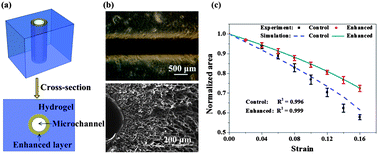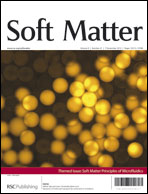Whilst microfluidic hydrogels find broad applications in multiple fields such as tissue engineering and regenerative medicine, it has been challenging to sustain the microfluidic structure of most hydrogels due to their insufficient mechanical properties. In this study, we presented a simple method to fabricate microfluidic hydrogels with mechanically enhanced microchannels by using interpenetrating polymer network hydrogels composed of agarose and poly(ethylene glycol) (PEG). The microchannels within the hydrogels were mechanically enhanced with additional PEG layer. Both experimental and numerical results indicated that the mechanically enhanced PEG layer along the microchannels improved the resistance to deformation under compressive loading relative to controls (i.e., without enhanced channel walls). We further assessed the diffusion properties and viability of cells encapsulated within the hydrogels, which showed no significant difference between the enhanced and control groups. The microfluidic hydrogel fabrication approach developed here holds great potential to impact a wide range of fields, such as microfluidics, tissue engineering and regenerative medicine.

You have access to this article
 Please wait while we load your content...
Something went wrong. Try again?
Please wait while we load your content...
Something went wrong. Try again?


 Please wait while we load your content...
Please wait while we load your content...